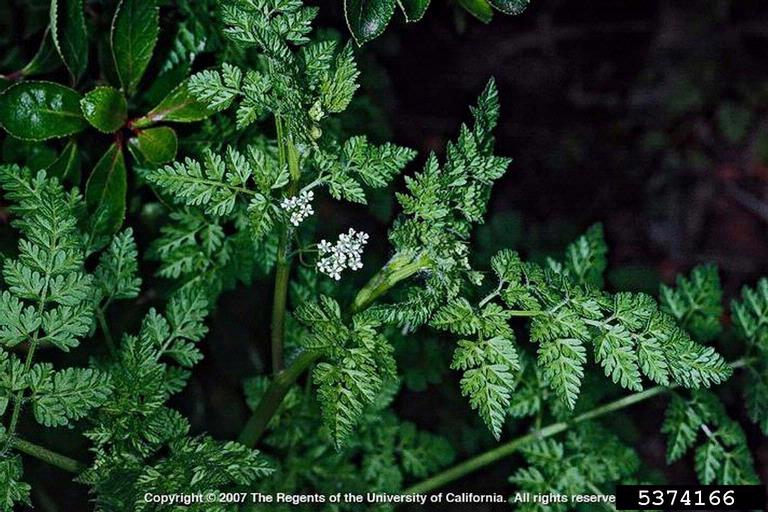Bur Chervil

Bur Chervil
(Anthriscus caucalis)
Priority: - Contain / Annual Control
Tags: Terrestrial
Identification and Reproduction
Identification:
- Bur chervil is a biennial or short-lived perennial plant that typically is under 1 m tall but occasionally reaches 2 m tall.
- Stems are hollow, branching with maturity and hairy near the base.
- This plant has triangular fern-like leaves that are alternating along the stem.
- Bur chervil flowers are at the leaf axils and arranged in umbel clusters. Individual flowers are small and have 5 notched petals.
- Noted by its name, seeds are bur-like bristles and allow for the seeds to easily cling onto materials, animals and people for transportation. Seeds taper to a distinct point or "beak".
- Taproots are thick and fibrous and can extend up to 2 m in depth.
Reproduction:
Plants only produce by seed.
Habitat & Ecology
- Bur chervil has adapted to poor growing conditions; sites that are shaded, poor in nutrients and sandy soils.
- This invader is typically growing in disturbed sites, ditches or waste areas.
- It is currently found in multiple parts of Vancouver Island; Comox, Cowichan Valley and Nanaimo.
Impacts
Social:
- Since it invades pastures and hayfields it reduces the forage opportunities for livestock.
- Similarly to wild chervil, bur chervil can be a host for a virus that attacks crop species in the same family, such as carrot, celery and parsnip.
Ecological:
- Bur chervil out-competes native vegetation and decreases the native biodiversity.
- It forms dense stands in moist meadow and riparian areas.
Management
Prevention is a high priority for this plant.
- When leaving an infested site make sure bur seeds are not attached to clothes, shoes, equipment, pets and vehicles.
- Be cautious when purchasing wildflower seed mixes, especially if they are not locally produced. These can contain seeds of bur chervil and other invasive species.
Mechanical/Manual Control:
- Hand-pulling or digging can be effective on small populations. It is recommended to remove plants when the soil is moist to remove the entire root system.
- Tillage can also be used as a control method during the dry months. This helps expose the roots so they dry and die off.
Resources
E-flora BC is a good resource to help identify bur chervil.
For more information check out the Washingon State University's page on Bur Chervil. Note this is a US resource and Canadian guidelines and regulations differ. Be sure to read labels prior to application.
Header photo (Hockenheim).




